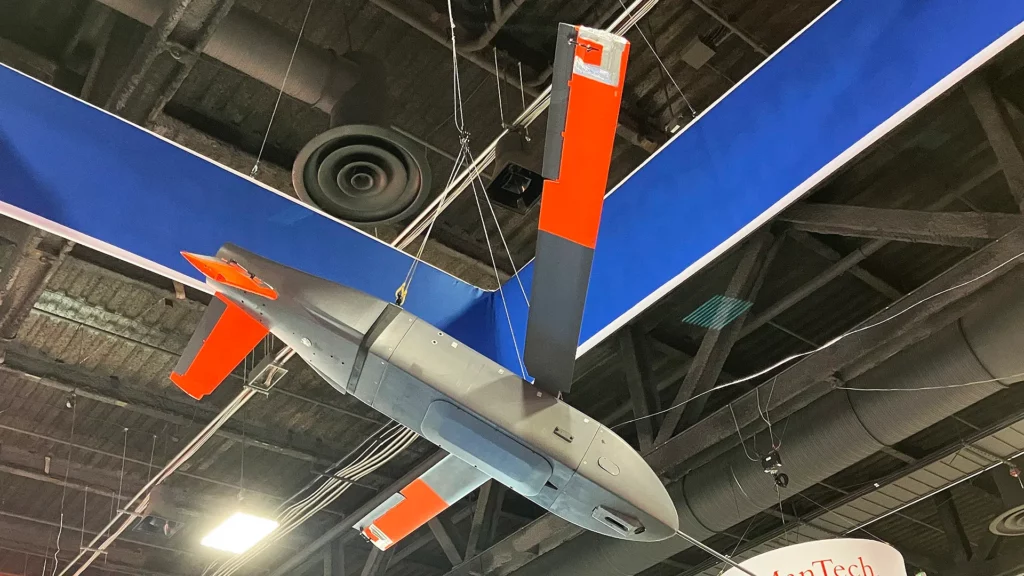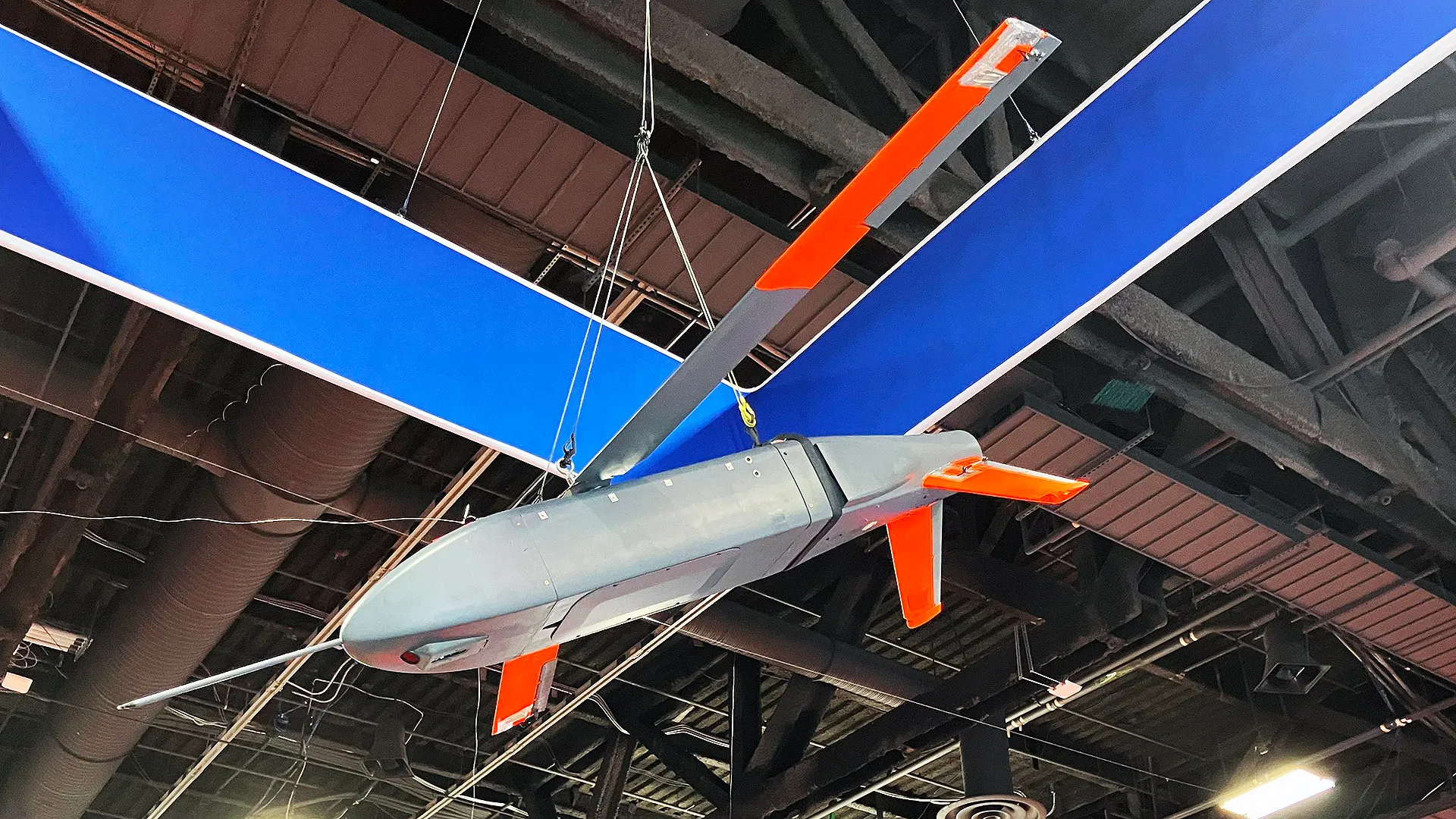La empresa Northrop Grumman ha presentado “LUMBERJACK”, su nuevo UAS multifunción y propulsado por un motor Jet, que le permite alcanzar objetivos a cientos de kilómetros de distancia. De lanzamiento aéreo o terrestre, puede llevar una carga letal de 250 libras (113 kg), equipamiento para misiones ISR o bien operar como una plataforma de guerra electrónica (GE), sobrevolando varias horas sobre la zona de interés como una “munición merodeadora”(LM) o un dron de ataque (UCAS). Puede además lanzar micro municiones guiadas para batir blancos múltiples. Y lo más importante, su costo relativo es menor al de otras armas con similares capacidades.
Northrop Grumman has just unveiled its new Lumberjack loitering one-way attack drone at the Modern Day Marine conference in Washington, D.C., at which TWZ is in attendance. We talked to Michael Bastin, director of technology for the firm, on the show floor to get the low-down on Lumberjack and what it brings to the table.
The jet-propelled weapon falls into the U.S. military’s Group 3 uncrewed aerial systems (UAS) category, defined as designs weighing between 55 and 1,320 pounds, able to fly at between 3,500 and 18,000 feet, and having top speeds of between 100 and 250 knots. Lumberjack can be launched from the surface or the air. It carries a payload size similar to that of a 250-pound class Small Diameter Bomb (SDB). It can be configured for kinetic strike, including dropping submunitions of its own, or other roles, such as acting as an electronic warfare platform or reconnaissance. This flexibility comes via a modular center base compartment.
“Because it is air-launched and/or ground-launched, and it has a several hundred-mile range, you can basically put in kinetic effects from a forward-deployed ground base — very modular — it’s a two-man lift. So you can have an ability to sort of reach out and defend surface and land capabilities, as well as air deploy, and have non-kinetic electronic warfare protection for your main forces,” Bastin told us.
It can also trade its range for loitering endurance, staying in the air over an area for “a couple hours.”

In terms of launch options, Bastin said “we’ve demonstrated two different launchers. One is an electric rail system developed for … the Navy, intended actually to launch off of ships. So you could actually launch this off of surface vessels. We’ve also launched it using a pneumatic technique, which is field-deployable. It’s very similar to what’s being employed currently in Europe … If the ground forces want it, it’s basically a large, effectively a potato gun. Very cheap, very easy to build. You can build it in, you know, local components.”
Cost-wise, Lumberjack is aiming to come in at around $75 to $100K “per effect,” according to Northrop Grumman.
With this in mind, from a single ground position, Lumberjack would allow a very small team to take on targets anywhere in a circle ranging at least 200 miles (possibly significantly further) in any direction, and do so relatively rapidly thanks to the Lumberjack’s jet speed. Once again, this is a capability far beyond the range of traditional and guided rocket artillery systems, and one that can be employed without the need to put airpower overhead. That is a huge amount of territory that can be put at risk very cheaply. The ability for a single Lumberjack to attack multiple small targets geographically separated, using submunitions on its one-and-only sortie it will fly, is also a major plus — both in terms of value and flexibility.
Lumberjack’s potential use as a ship-based weapon is also attractive, especially due to its cost, range, and smaller size. Its loitering ability could come in use for many roles, from electronic warfare to reconnaissance, but especially for setting up force protection pickets between the ship and potential small surface threats. You can read all about how a weapon just like this could be a huge plus for surface combatants in this past feature of ours.
As for air launch capabilities, that seems a little less defined as of now. The weapon has roughly the same size and mounting provisions as a Small Diameter Bomb (SDB), Bastin told us, and the company is working with a “number of government partners” investigating a variety of launch platforms. When it comes to the possibility of putting this on fast jets, not just slower helicopters and fixed-wing aircraft, there are “customers interested in certifying it for that,” Bastin said.
Then there is the fairly bizarre name, Lumberjack. Bastin wasn’t sure how that came about, but as we look at the concept and its submunitions dropping capability, as well as other Northrop Grumman products, it may be that it is intended to drop Hatchet, the company’s 6lb micro guided munition, which is already finding its way onto other Group 3 unmanned aircraft. The pairing of these two concepts together would be highly logical and would up the procurement case for Lumberjack.
According to Bastin, Lumberjack has been undergoing test flights and demonstrations since last year in conjunction with the Office of the Under Secretary of Defense for Research and Engineering (OUSD R&E). The system is at the point now that Northrop Grumman is looking for a customer to move it out of the experimental development realm.
We will keep an eye on how Lumberjack progresses, but it certainly fits with the broader trends in warfare we are experiencing. Whether or not it will actually get a chance to take a chop at the enemy on a real battlefield, we’ll have to wait and see.
UPDATE: We have found out in subsequent discussions with Bastin that Lumberjack is fully autonomous, but it can also be used with man-in-the-loop control, depending on what the customer wants for certain mission requirements. It does have a datalink capable of sending updates as to its mission or for direct control. Also, we got a confirmation that Lumberjack could drop Hatchet, along with a number of other potential munitions.
Author’s note: Originally, the price of the weapon was quoted directly in this story as $75-$100K. Northrop Grumman reached out and let us know that price is better reflective of “per effect” that the weapon creates on the battlefield. This is a much more nebulous figure, which Northrop Grumman acknowledges, stating “Lumberjack’s modular design enables it to carry a variety of payloads for different effects and pricing varies by payload.” We pressed for greater detail, but they could not provide any additional clarification at this time. Still, destroying or disabling a target at standoff range with minimal infrastructure and operational support, even using a micro-munition dropped from this missile, for that price is very efficient based on current weapon costs.
Fuente: https://www.twz.com


